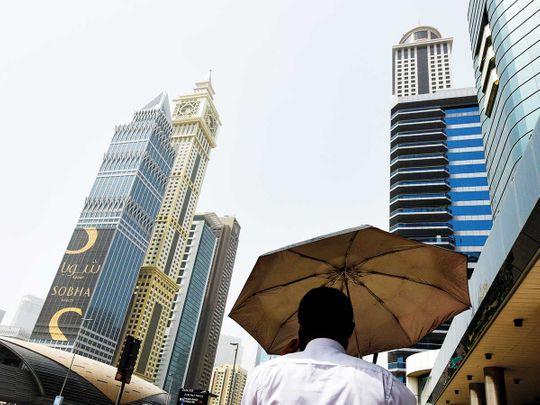
Dubai: Planning to end your fast outdoors? Pleasant weather in the evenings this Ramadan might be perfect for your iftar plans.
A recent weather report by the National Center of Meteorology (NCM) stated exactly what the weather conditions to expect during the month.
They said UAE residents can expect some rain and pleasant weather in the evenings as they end their fasts this Ramadan.
This year Ramadan is coming in the fourth quarter of April, and will finish in the third quarter of May, which is considered the transitional period between winter and summer, also known as spring.
According to the NCM report, during most days of Ramadan, the weather is expected to be relatively hot during daytime over internal areas, such as parts of Abu Dhabi and coastal areas such as Dubai, Sharjah and Ajman.
The weather is expected to be slightly cooler in the eastern mountainous regions of Ras Al Khaimah and Fujairah.
The temperatures are expected to be lower at night-time with pleasant temperatures at dawn.
Average temperatures
As per data collected over the years about temperatures during this time of the year, the average temperatures usually range between 33°C and 41°C and the maximum reaches approximately 48°C over some internal areas by the afternoon. While the mean minimum temperatures range between 21°C to 26°C.
The lowest minimum temperatures reach approximately 7°C, which are usually recorded in mountainous or internal areas in the early hours of the day.
During this period of the year, the Siberian high, which is a collection of cold dry air, will gradually weaken and decline, especially in the second half of Ramadan.
Will it rain?
According to the NCM, the Arabian Gulf region will be affected by the extension of transiting low pressure, where a low pressure extends from the west or east, when accompanied by an upper air low pressure over some areas, with a chance of rain.
The highest rainfall recorded during this period in the past years was 153.6 mm over Al Rezeen, in Abu Dhabi, on April 17, 2003.
There’s good news for those who are not fond of humidity, as the relative humidity is expected to decrease, especially during the second half of Ramadan. However, fog and mist formation is expected, during the early hours of the day.
The average maximum relative humidity usually ranges from 60 per cent to 75 per cent during the night and early morning during this period of the year. While, mean minimum relative humidity ranges from 15 per cent to 28 per cent during the afternoon and daytime.
Southeasterly winds are expected to blow during night-time and mornings, changing to northwesterly by the afternoon and evening, over the land and sea. The winds are also expected to cause cloud formation, and dust and sand to blow at times.
The maximum wind speed recorded during this time of the year was 117 km/h over Ras Al Khaimah’s Jabal Mebrah on May 6, 2010 and the average wind speed is 13 km/h.
How long will UAE residents fast this year?
The number of hours from dawn to sunset in the beginning of the month are approximately going to be 14 hours and 2 minutes, which will gradually increase day by day, and will approximately reach 14 hours and 44 minutes at the end of Ramadan.








